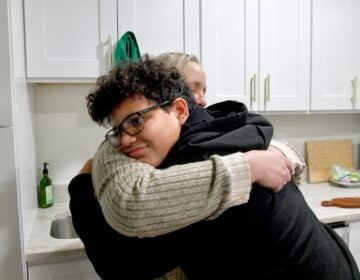Portrait of N.J. high school students includes many who study the fine arts

(AP File Photo/Phelan M. Ebenhack)
Nearly half of New Jersey’s high-school students took at least one arts class last year, according to this year’s state report cards, a statistic that thrilled arts enthusiasts and educators.
Many found the large percentage of students taking classes in visual arts, music, theater and dance, as measured by the School Performance Reports released earlier this week, especially encouraging. They noted that the state requires only one full-year course in the fine arts for graduation and busy students can have a tough time fitting arts electives into their schedules.
“It is a challenge for students to fit arts courses in their schedules but many find a way,” said Joe Jacobs, president of the New Jersey Music Educators Association and a teacher at Ventnor Middle School. “The arts play a vital and essential role in the education of our students … The arts not only inspires our students but teach creativity and problem solving.”
This was the first year that any information about the arts was included in the annual school report cards issued by the state Department of Education. New Jersey officials say it was also the first time that participation in arts education has been included in any of the state’s annual school-level reporting.
More than 47 percent of New Jersey’s high school students, or almost 200,000, took at least one arts class in 2012-13. Visual arts courses – drawing, painting, sculpture and the like – were most popular, taken by three in 10 students. About 17 percent took a music class, while 4 percent took drama or theater and 2 percent took dance. The latter two classes are not offered in many schools.
New Jersey requires students to take a five-credit arts course in order to graduate from high school. The data show students on average are taking twice the minimum requirement.
“Research shows a strong connection between arts education and success in college and career,” said Chris Cerf, the state education commissioner. “Arts education is crucial in unleashing the creativity and innovation that are needed to succeed in today’s workforce. I’m proud that New Jersey is at the forefront of this effort.”
Numerous studies have shown a correlation between the arts and student achievement. A 2012 report by the New Jersey Arts Education Partnership found that Garden State students involved in the arts were more likely to have higher scores in language arts literacy and were more likely to enroll in college.
There are a few specialty schools in the state – vocational, charter and magnet performing arts schools – where student participation in the arts exceeded 90 percent last year. In 55 schools, more than two-thirds of students took at least one class in the arts. On the other hand, there were about 20 schools that reported fewer than 1 in 10 students took classes in the arts.
During times of tight budgeting, such as districts have faced in recent years, arts classes can wind up on the chopping block, particularly as schools are forced to offer other mandated courses – the current senior class is the first that had to complete 2.5 credits, or a half-year course, in financial literacy.
“Regardless of changes, the arts remain a graduation requirement,” said Robert Morrison, chair of the Arts Education Partnership. ”That said, we have heard about scheduling challenges, fewer section offerings and the addition of the financial literacy component as all being issues.”
“During the difficult economic times of the past few years, art programs throughout the state suffered budget cuts and reduction in staff, as well as in the number of courses offered at the high school level,” said Ellen Hargrove, president of Art Educators of New Jersey and a teacher in Haddon Township.
Another issue for some high-achieving students in particular can be a lack of time within their schedules to fit arts classes. Students taking Advanced Placement classes, for instance, may have longer class periods and thus less free time in which to fit electives. Or arts classes conflict with required courses.
“Scheduling difficulties occur when fewer courses are offered, creating a situation that further impacts the availability of art electives so fewer students are able to reap the benefits of a thorough arts education,” continued Hargrove. “We are hopeful that the inclusion of the Visual and Performing Arts in this report officially confirms the importance of these subjects to a child’s future success, and that we will see support for, and measurable growth in, art programs in school districts across the state.”
“I say you cannot achieve your educational goals by excluding the arts,” Morrison said. “We do not teach our students math because they will all become mathematicians or language arts because we want our students to become writers any more than we teach the arts to create the next generation of artists. We teach the arts to create empathetic, creative, great people regardless of their educational pathway or chosen avocation.”
_____________________________________________________
NJ Spotlight, an independent online news service on issues critical to New Jersey, makes its in-depth reporting available to NewsWorks.
WHYY is your source for fact-based, in-depth journalism and information. As a nonprofit organization, we rely on financial support from readers like you. Please give today.




